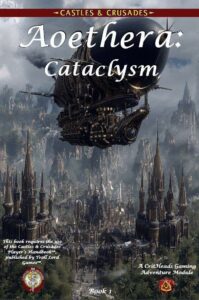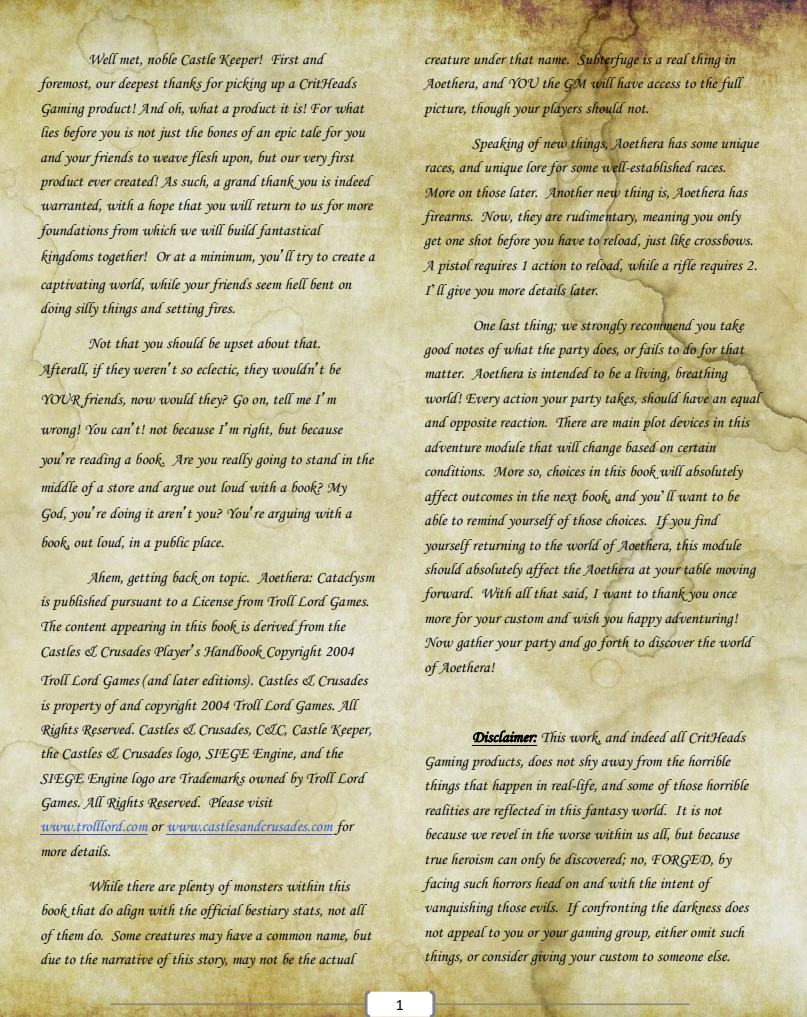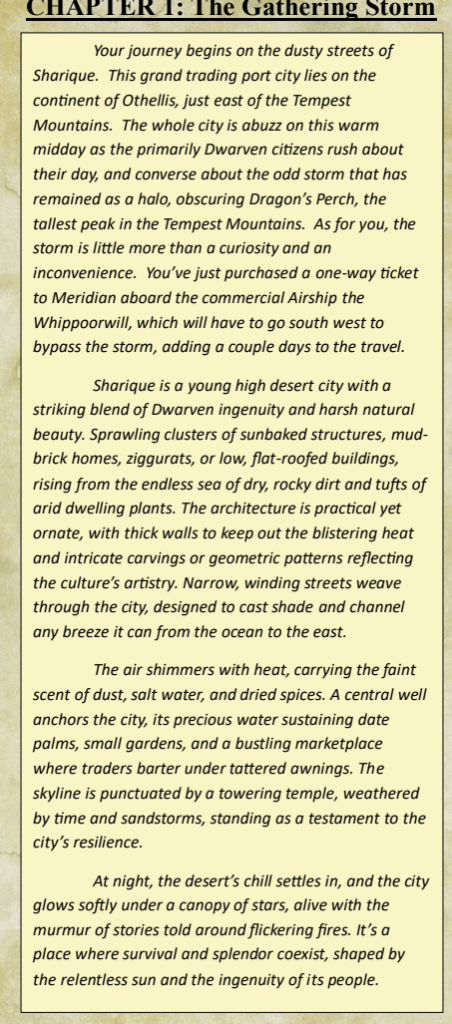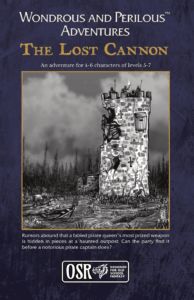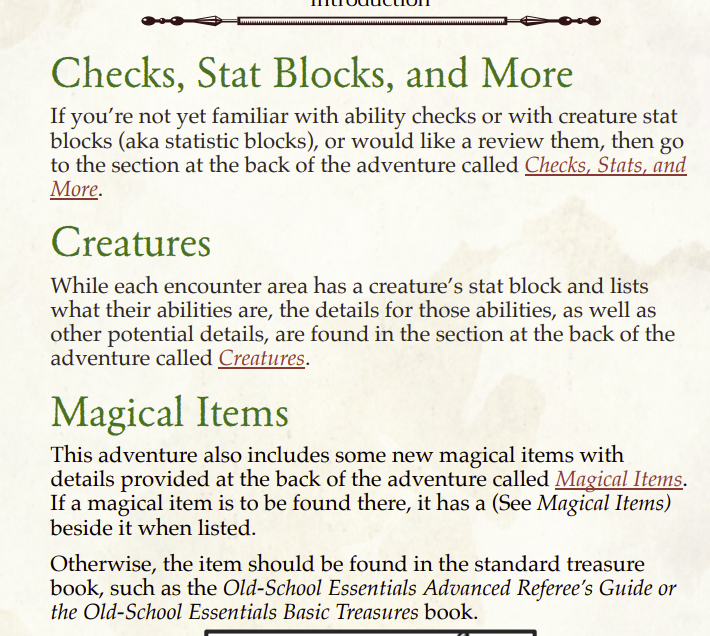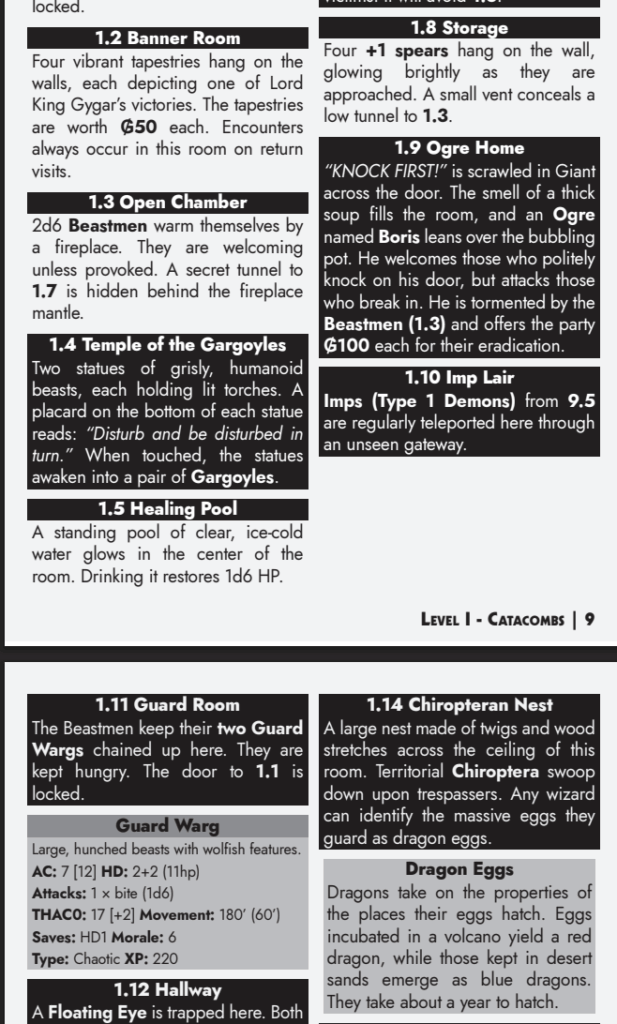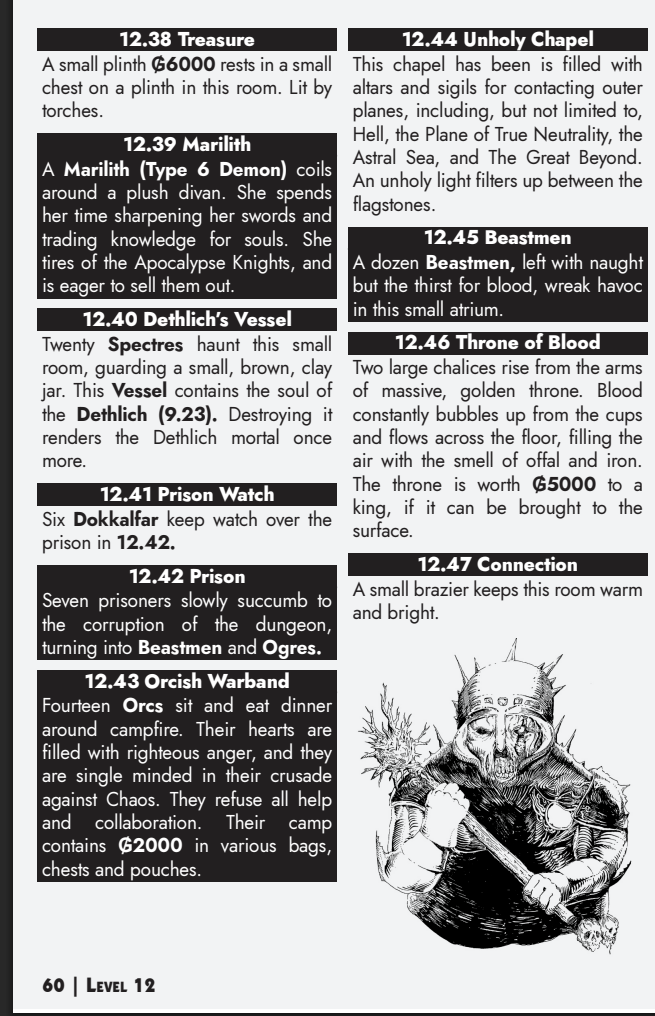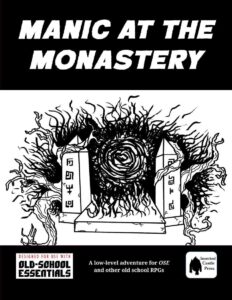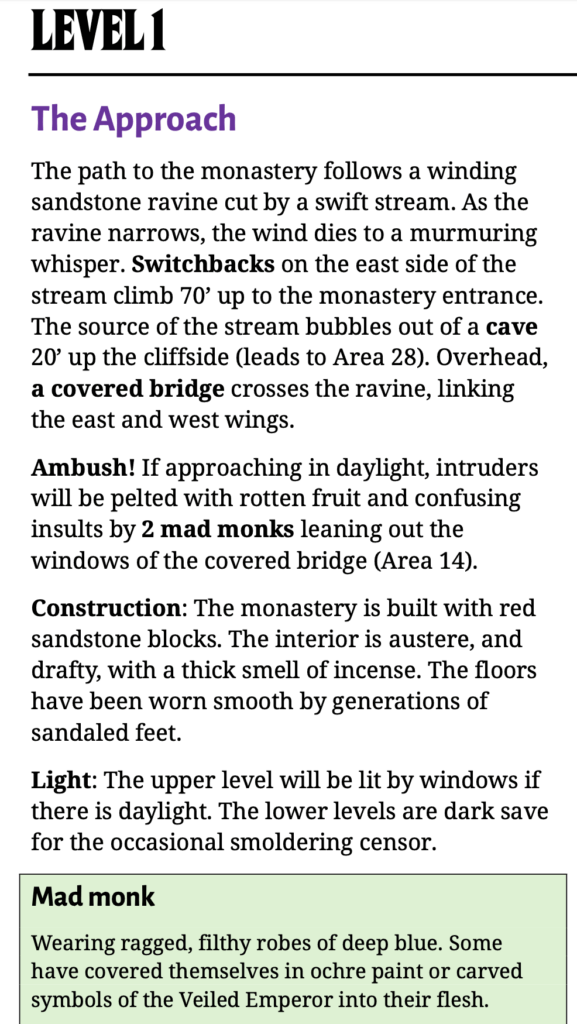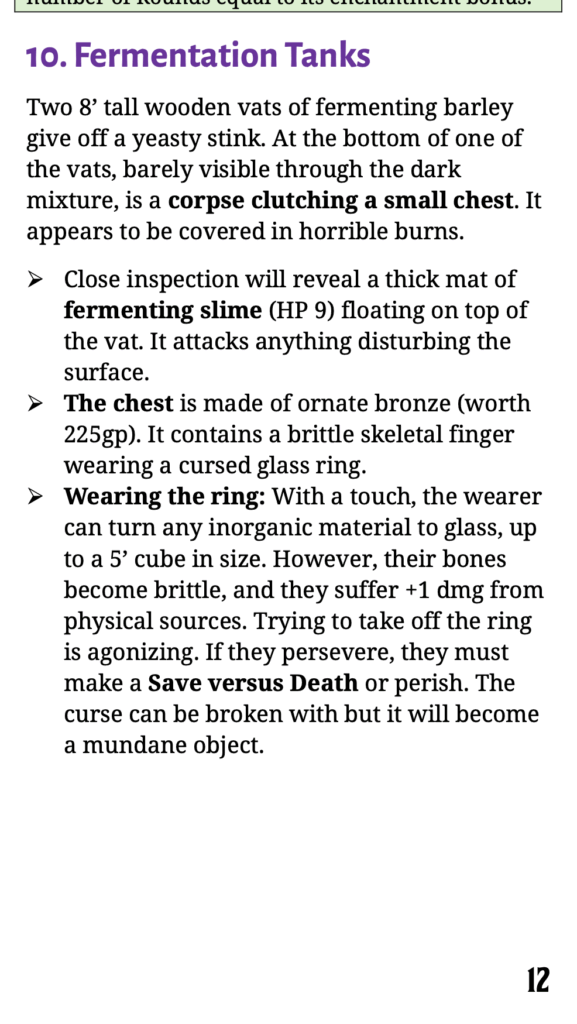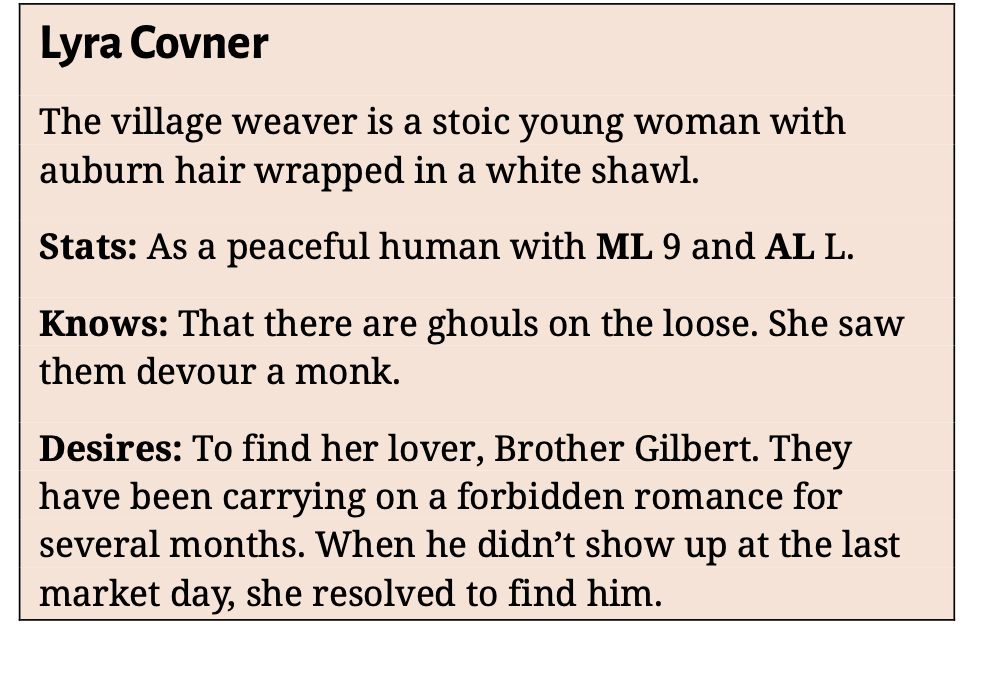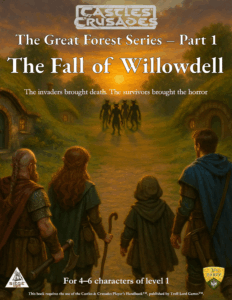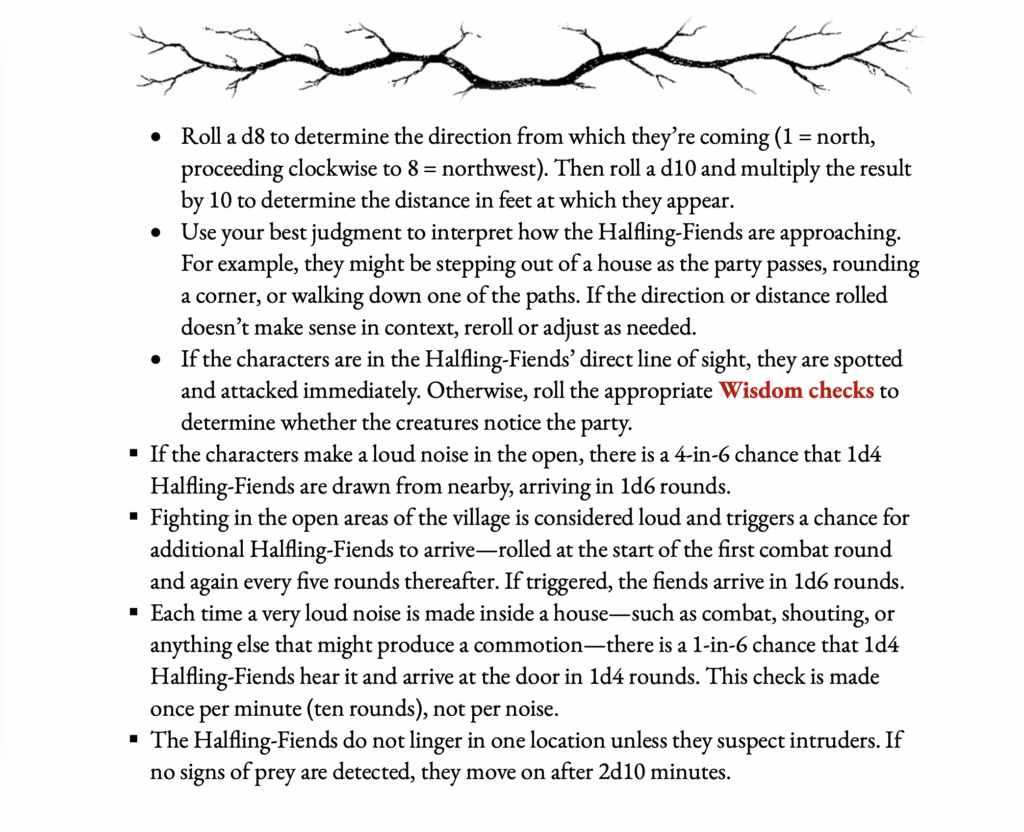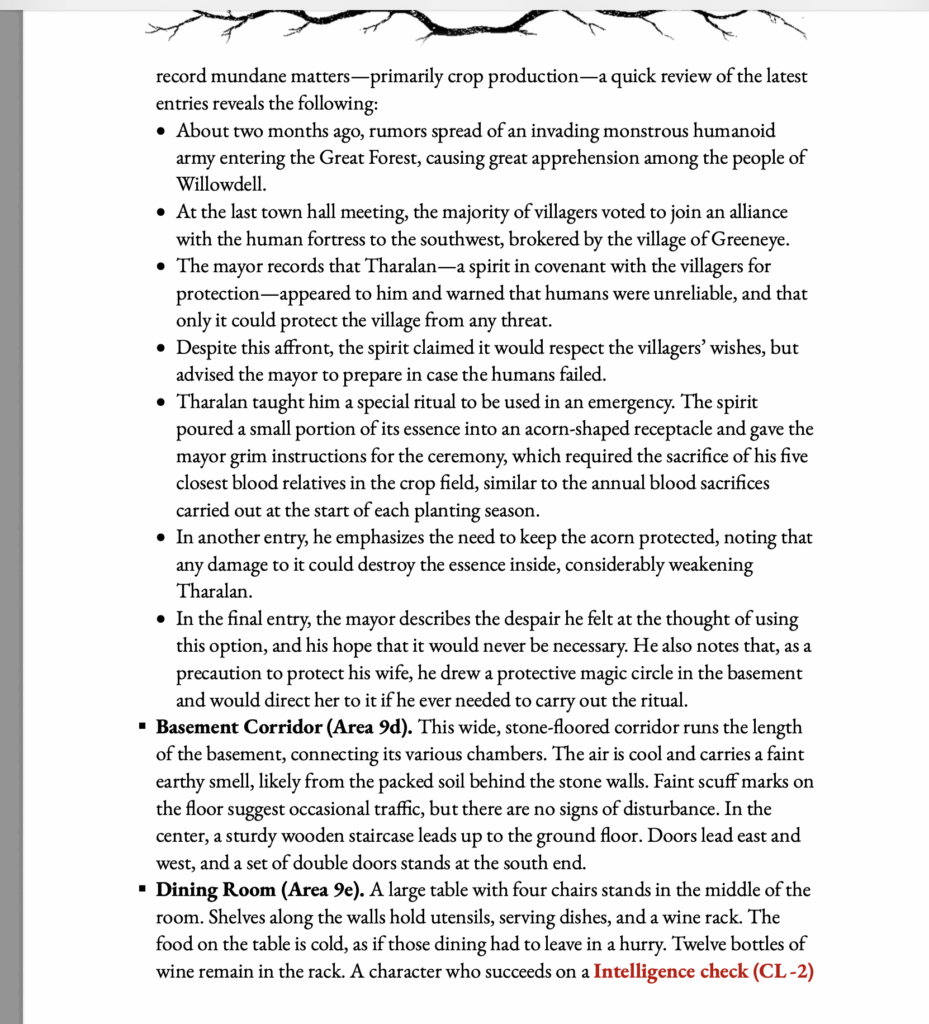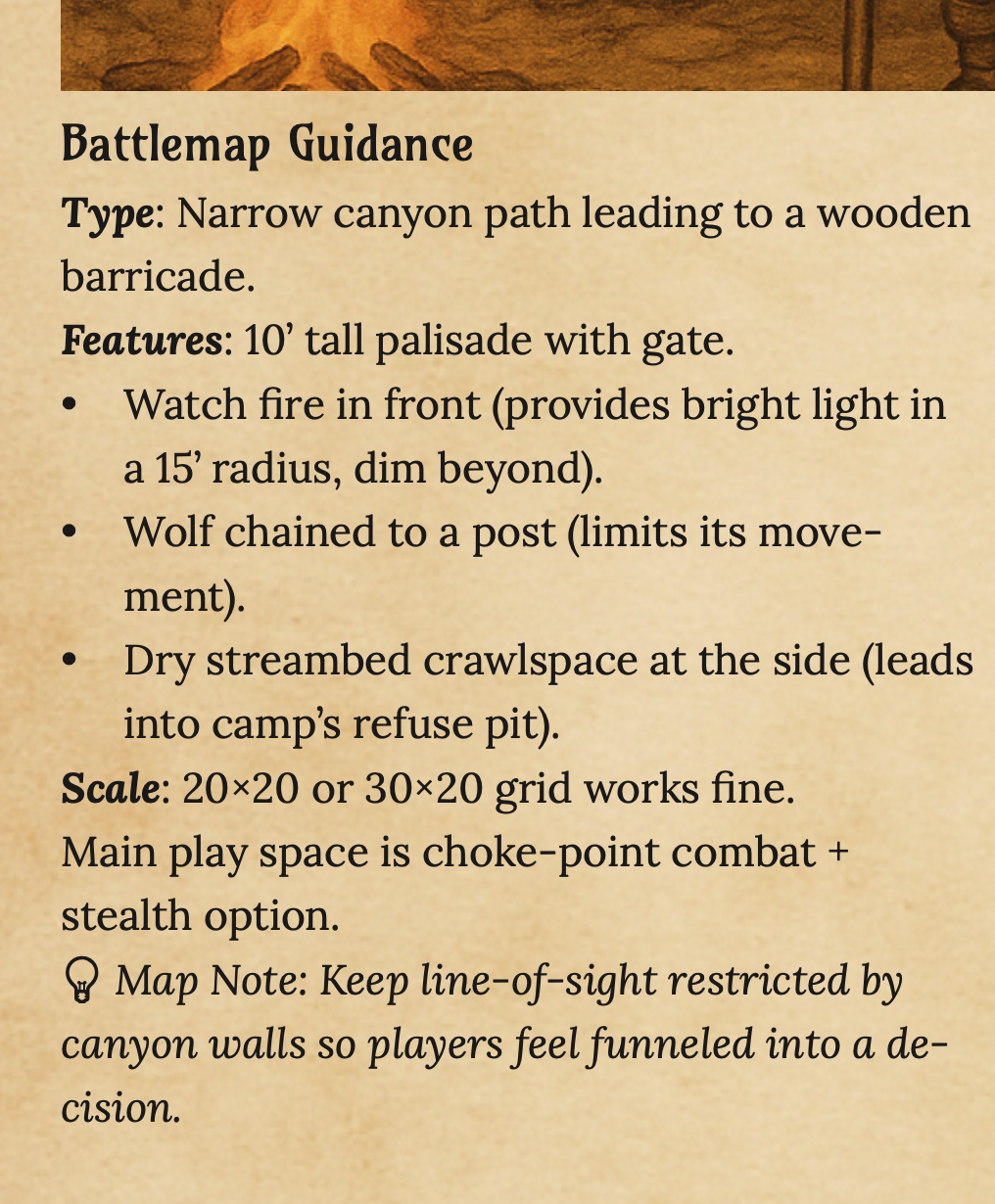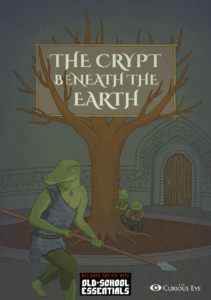
By Adam Helešic
The Curios Eye
OSE
Levels 1-2Delve into the decrepit druidic crypt occupied by the warring tribes of lizard men and gullygugs. Discover its treasure, history, secrets, and rituals. Ally yourselves with the inhabitants, fight them, outsmart them, use every advantage you have to gain the upper hand and leave the dungeon with pockets full of gold, gems, and magic items!
This 24 page adventure uses thirteen pages to describe about twenty rooms in a druid crypt/cave complex overrun by a couple of humanoid factions. It tries. Really hard. Like, maybe, if you really tried to hand copy an illuminated manuscript. It just feels off, as if the various rooms don’t really belong together or interact together in any but the most basic of ways. The OSE style is not used in a very effective manner and the writing could be better. Still, though, you can see an adventure in there.
In a throwback, we’ve got no hook here. There’s just a giant tree with a hole hacked in to it and a set of stairs going down. Inaside we find an old elven druid burial ground. At least a few rooms full of it. And some bullywugs who’ve started to set up a lair. And some lizard men who are also trying to set up a lair. With the two groups fighting. And a treant protector of the tomb, who is absolutely useless, who wants everyone to be respectful. And a genie that the bullywugs have who is kind of an asshat in a new and different genie way. And some arcana spiders who just want to be left alone too do their magic shit. . Which almost certainly means they’d be REAL happy if the bullywugs were wiped out. No one likes you bullywug! Go home! Enter the party.
The map supporting play has, I don’t know, maybe one major loop. It does have monsters noted on the map and is easy to read, but also it feels rather linear. Not, I don’t know, natural? It’s ok. If you were looking for a basic map to support an adventure then this would do it. It’s not going to create fun, but, there it is.
And, that’s kind of the same with everything in this. What if you knew what the correct thing to do was but can’t quite get there? There are wanderers. They are doing things. But, well, they are not great. “1d6 lizard men in a battle-ready formation, slowly moving through the dungeon.” Well, ok, sure. But thats really not much more than my d12 table I use in my game for wandering motivations. It’s fine. Really.
There’s a line in this that I think is great. “The gullygugs are bandits, thieves, and overall bastards who can’t agree on anything, their approach always preceded by the sounds of their bickering.” That should, I think, be the springboard to many encounters and many situations. But I don’t think it’s taken advantage of. Playing them against each other. Hearing them coming. Luring them away. That’s the kind of “neutral environment” thing that I love. But I can’t see the adventure really taking advantage of it at all. Or, even, making opportunities where it could come in to play beyond the most simplistic “we approach the room and hear arguing” sort of thing. A potential denied, so to speak.
There’s OSE formatting. OSE formatting can be good. But only if done well. Is it done well here? Well, no? There’s descriptive text. Is it done well here? Well, no? There’s encounters with people to talk to and scheme. But, is it done well here? Well, no? Is any of it done BADLY, to the point of being odious, obviously off the mark or so on? Well, no.
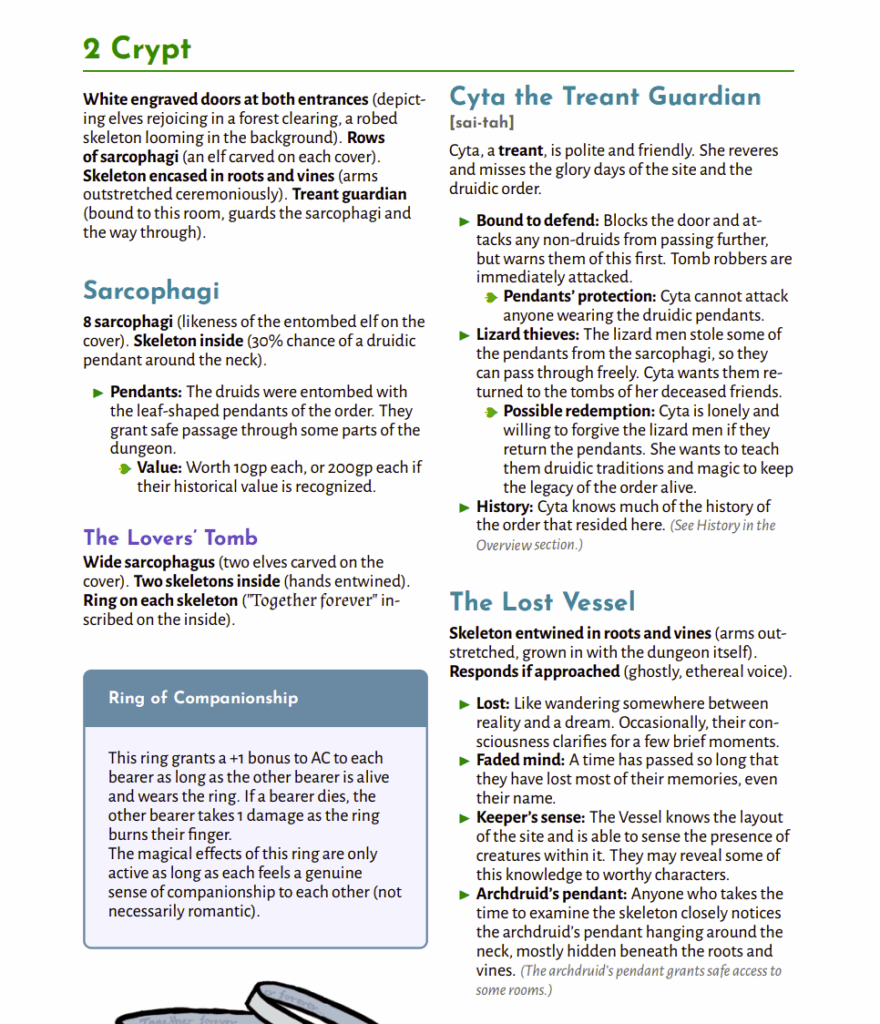
We can see from that clip the OSE style. And how it has been clumsily implemented. Then, given the sarcophagi, the treant (in a dungeon …) and the skeleton vine dude, what order would you put the follow up the detail in? Or even the initial OSE style detail? Which is likely to be the most important thing, meaning what the party notice first or interacts with the party first, etc. What are you likely, as a DM to NEED first, in terms of follow up order and what are you likely to want to know about first, as a player, in terms of the OSE description section? Not what’s there. And then, the dude. The skeleton vine dude. Essentially he doesn’t do anything. I think the designer MEANT for this to be important. Interacting with him, what he says/des etc. But I don’t get much of anything out of that description. How to use him, both literally and figuratively. There is a lack of … payoff? Build up that leads to payoff? Does anything there, on that entire page, make you excited and the make the juices broil and cause ideas to leap to mind? Sure, not everything has to be The Jungle Cruise at Disney, but, also, maybe we can get to Epcot levels? Nothing there inspires.
And, even, nothing there is very well integrated in to the other environments. The lizard men, the bullywugs, the genie, the arcanas … there’s not much here. The treant would like people to play nice. Great. We just need a little more here. Some slightly stronger leanings towards interactive play. You can’t just SAY there are factions, you also need a little shove in to factions.
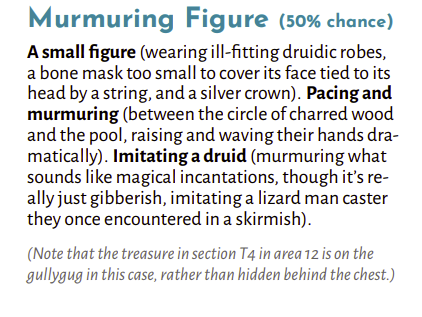
There’s this tendency to miss the obvious thing in the adventure. We see here the murmuring figure, a 50% chance of being there. Ok. Kind of an OSE description. Ok, not the bets one ever. Kind of a lack of understanding what the OSE description style is, but it’s there. I wonder, though, what the murmuring figure IS? There’s no indication of which monster this is. It’s not obvious at all. I’m not cherry picking, it’s not in text below this or anything like that. There’s just nothing there. You just missed one step: what the fuck it is. The most important one. In another spot there’s this adventurer that’s is emaciated, slumped against a wall, almost in a coma or asleep. He’s got some worm thing sucking his could out, and it will attack the party. But, what then, the adventurer? Nothing. Nothing at all. Who is he. Does he wake up. What if the party manages it? I get it “12 prisoners in a cell” don’t all need a personality and a life story. Sometimes genero dude is just a genero dude. But this is ONE guy. And it’s almost certainly the case that the party will do SOMETHING to try and help him. And if almost every party is going to do almost the same thing every time, then it seems like the designers job to maybe just provide a couple of words there to help support the DM during play.
This is free at DriveThru.
https://www.drivethrurpg.com/en/product/527477/the-crypt-beneath-the-earth?1892600


